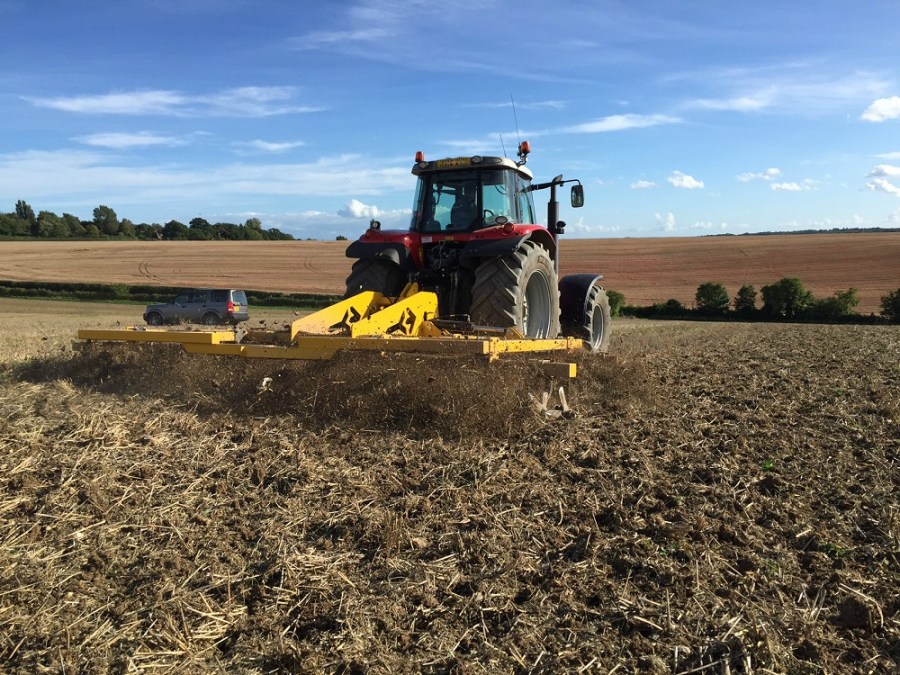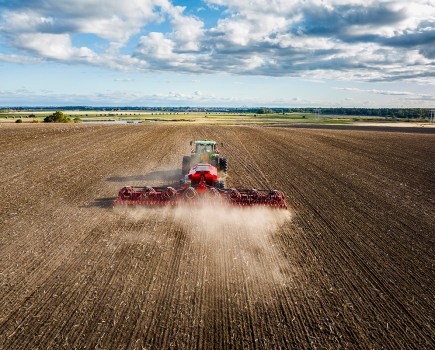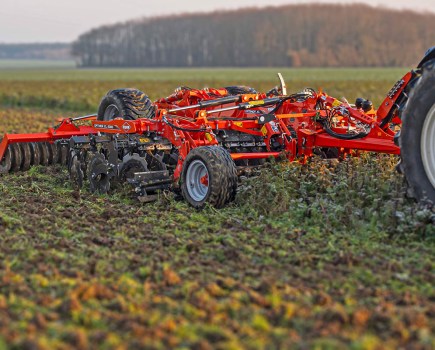Weeds and slugs can soon wipe out any savings you make from direct drilling. CPM asks strip-seeding pioneer Jeff Claydon for some tips.
A little-and-often approach is required when managing stubbles.
By Julian Cooksley
Effective stubble management is a basic ingredient of any successful, sustainable farming enterprise, regardless of which crop establishment method is used. But the economics of farming must be weighed up with the level of cultivations undertaken, notes Suffolk farmer Jeff Claydon, who explains his approach.
“Those who still plough or deep cultivate are losing £30-£40/t at current cereal prices,” he says.
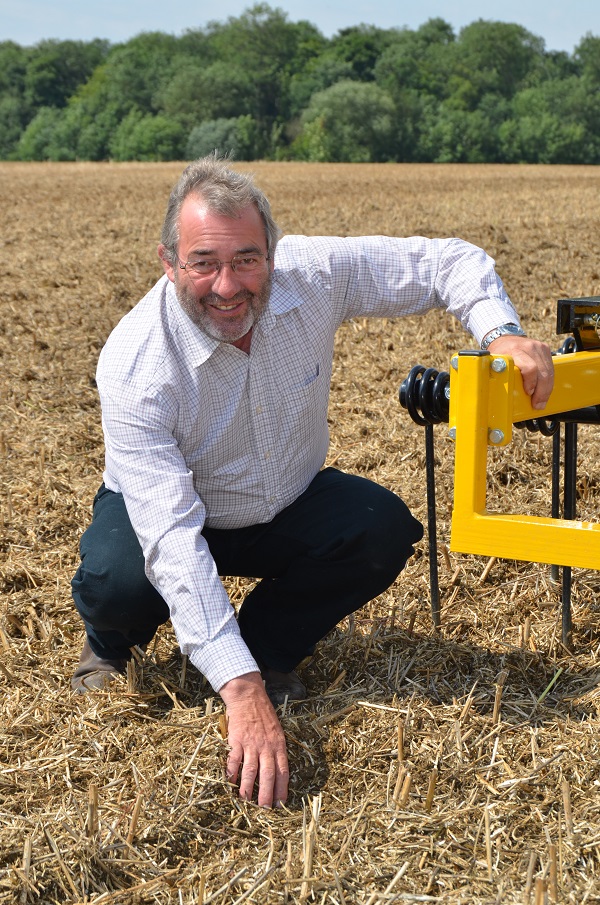
Jeff Claydon believes that the importance of effective stubble management is under-estimated.
Establishment costs are one of the few areas where savings can be made. But he believes many growers are turning to direct drilling often without understanding the need for effective stubble management to contain weed and pest issues, or how to go about it.
“I often come across farmers who have been persuaded to buy a direct drill purely on the basis of its potential cost saving, without being told the full story. Direct drilling is potentially a very valuable technique, but in order to work successfully and sustainably it must be done correctly.”
Benefits build over time
Weed and slug issues can build up if stubbles are left unmanaged, and he points out it takes time for critical beneficial bacteria and worm populations to build up in the soil. “I found out the hard way that moving to a direct drilling system involves much more than simply owning a drill which works in chopped straw without blocking.”
In 2002, low grain prices prompted Jeff Claydon to develop the tine-based sprip-seeding system that bears his name. Designed to work directly into stubbles, he used it to do just that. “It had no problems coping with chopped straw and for two or three years we achieved
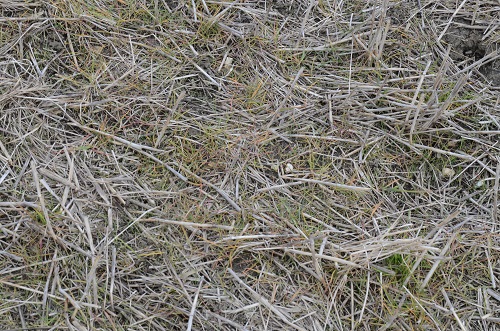
The soil on this trial area was left undisturbed after the 2015 harvest, yet despite four applications of glyphosate new blackgrass shoots were still emerging in April.
increased yields combined with very low costs. But then I realised it wasn’t always going to be that simple.”
With stubbles left virtually undisturbed, slugs had a licence to multiply, particularly where straw was poorly chopped and distributed. This resulted in areas where the crops were thin or non-existent, and blackgrass took every opportunity to grow on any bare patches. “It quickly became apparent that to get the best results and avoid a proliferation of weed and pest issues stubbles would have to be actively and effectively managed.”
He advocates active management of stubbles, based on 14 years’ experience of direct drilling. “Doing nothing or just moving soil once or twice during the 8-12 weeks between harvesting oilseed rape and drilling autumn cereals will not achieve the desired results. Instead, a little-and-often approach is required when managing stubbles, the key being to achieve rapid germination of weeds and volunteers so they can be killed using mechanical or chemical methods.”
The conventional min-till approach moves 100mm-125mm of soil, which is too much, says Jeff Claydon, and results in slower germination or burying weed and volunteer seeds so deep they don’t germinate until after the crop itself emerges. “Deeper cultivations also present a weather risk, as significant rainfall will reduce the soil to a sticky mess with no structure or ability to support following machinery,” he adds.
Chop and spread straw
“My objective is to create a tilth without moving too much soil. We aim to leave a maximum of 150mm of stubble, chop the straw short and spread it evenly. Immediately after combining we go in with a 7.5m Claydon Straw Harrow, which performs three main functions: trash and residue management, slug control and encouraging weeds and volunteers to germinate.”
Operating at 15-25km/h behind a 150hp tractor, it’s fitted with 60 pairs of 16mm flexible steel tines which disturb the top 10-30mm of soil, covering up to 100ha per day. This is repeated every 7-14 days when conditions are favourable, to help destroy germinating volunteers, weeds and slugs. “So little soil is moved that if we do get wet weather this mini-tilth will quickly dry out and not hold up subsequent operations.”
The Straw Harrow works well on most farms, but sometimes harder clay-based soils may require something a little more aggressive. Where this is the case, he uses the Claydon TerraStar. This is a low disturbance, 6m shallow cultivator fitted with 68 cross-blade rotors. These move slightly more soil than a Straw Harrow but less than normal tine cultivators or disc-type implements.
The two banks of rotating blades pluck tilth out of the soil, approximately 30mm deep, to increase the surface area of unmoved soil under the tilth, depending on soil type and conditions. This generates a high-humidity environment in which volunteers and grassweeds germinate quickly. “We then use the Straw Harrow to create a wave of surface tilth to break off germinating plants at the one-leaf stage, eliminating the need to spray while ground conditions allow its use.”
Although this involves multiple passes, each one is relatively cheap, and relies less on glyphosate and multiple dressings of slug pellets, he points out. “On our own farm we’ve proved the benefits of direct seeding beyond doubt, but the caveat is that it must be done correctly in combination with an effective stubble management strategy.
“Using timings of light surface cultivations, strip seeding and wider rotations, we’ve seen yields increase progressively. However, we’ve also learned that ignoring weeds, volunteers and slugs doesn’t make them go away – it’s essential to make them grow and kill them so that they cannot return.”

